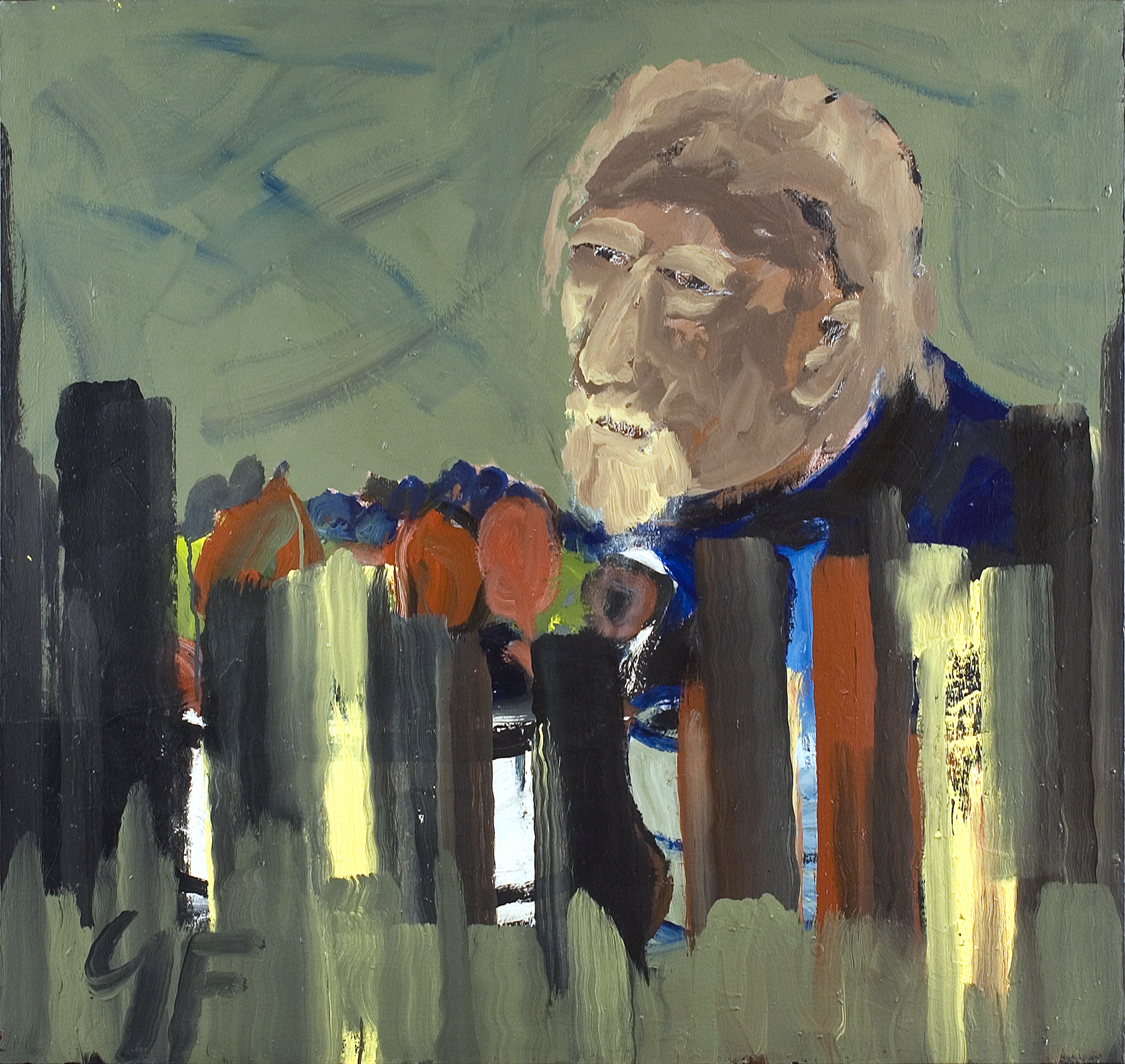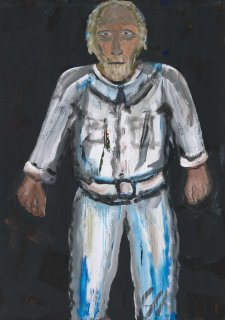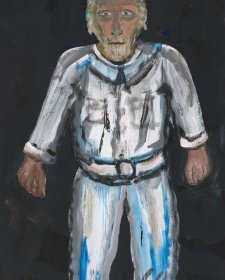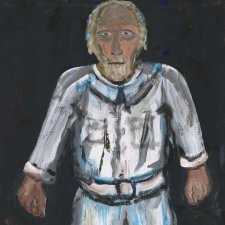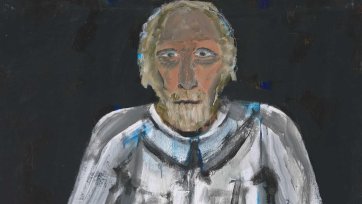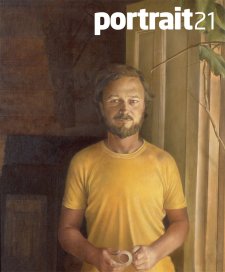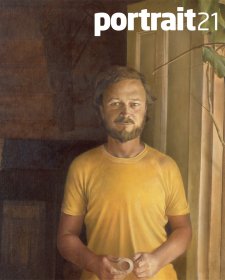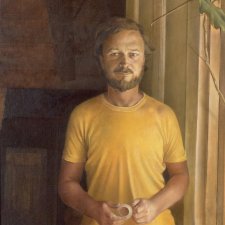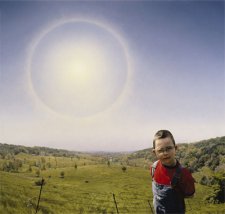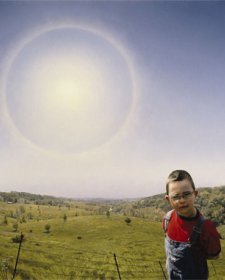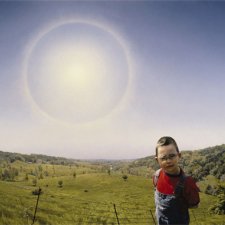George Foxhill manages the inexplicable marriage of brutality and gentleness. True, it seems at times a shotgun marriage in which the partners are coerced into living together, but Foxhill’s paintings somehow reconcile a savage approach and a tender effect. This is particularly evident in the small group of self portraits on display in the Oatley Gallery from November this year to April 2007.
Foxhill, now 84 years old, is a long time Canberra resident. He studied art in his native Austria, attending the Kunstegewerbeschule and the Volkshochschule in Salzburg after the war. He responded to the expressionist legacy of the city and the hardship and rude vigour of the times. With his wife Rosa he migrated to Australia in 1956 and moved into his house in what is now the inner city suburb of Dickson when it was a first established in 1958. There was little encouragement for the arts in those days and Canberra in particular was something of a cultural desert. Foxhill’s strength of purpose and belief in himself carried him though until he gained belated recognition in the 1980s. His full length portrait The determined 2002 expresses the rigour and unwavering resolution of a pioneer and indeed this is apparent in all of the self portraits.
Foxhill’s work shows affinities with the Austrian expressionists like Oskar Kokoschka who he met in his youth. Foxhill’s portraits are more concerned with describing an emotional and psychological state than the surface topography of the human face. His ambition in these works is to understand himself, to depict the tensions of human existence as expressed in one life. In White on black 2005 Foxhill shows how simple and complex a portrait can be. Constructed with rapid strokes of white paint on a black ground, the portrait is simultaneously as assertive as a diagram and as ephemeral as a ghost. Hostile powers (A personal story) 2003 shows the artist as suffering everyman, crucified like a latter-day Christ while mocked, humiliated and tempted by the hostile elements of life. Drawn from the subconscious, the imagery is chaotic and raw.
In this red and black composition, the distortions, energetic brushstrokes and bold forms suggest that technique is a vehicle for emotion. Mood is the guide to reading Foxhill’s imagery, witness Self portrait wearing the Austrian Medal of Honour for Arts and sciences 2003. A rosy face peers over the bemedalled artist’s shoulder - is it an envious friend, a curious bystander, an admirer, or perhaps the muse? Again the artist has used a simple palette - blue and red - but the sinuous curves and soft edges convey a different mood, one of innocence and beauty.
In his Self portraits: one nice and two ugly 2005 a trio of Foxhills appear, roughly brushed onto the canvas. The artist identifies the two flanking portraits – one in angry red and the other in cool blue - as the ugly portraits, but all are equally honest in their depiction of the artist’s face and how each answers the question ‘Who am I?’
In his self-portraits Foxhill effects a sombre and melancholic atmosphere as a means of expressing the anxiety and profundities of contemporary life. He is a sensitive heart whose paintings reveal the inner man and reconcile beauty with a gentle humanity. George Foxhill records the tender tragedies of everyday life.
